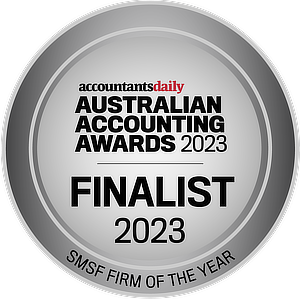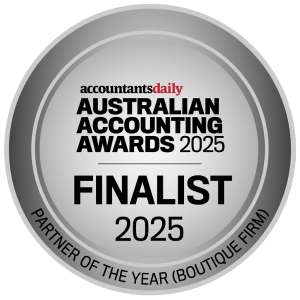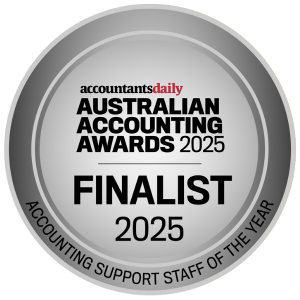When is a borrowing not a borrowing?
According to SMSFR 2009/2 the answer is when it is merely a “financial accommodation”.
I know it sounds like a bad joke that a bunch of lawyers might chuckle over after having had a beer or 2, but the underlying implications of this ruling for SMSF’s and related parties are both bizarre and really important to understand.
Consider the following scenario that mirrors a recent case we have been involved in:
Bob has his own self managed super fund of which he is the sole member. His father Kevin owns a commercial property and is willing to both sell the property to Bob’s super fund and provide the finance for him to do so. Bob would like to enter into a limited recourse borrowing arrangement (LRBA) whereby his fund pays a 10% deposit for the property and the balance will be paid off (principal and interest) over the next 10 years. Bob is happy to pay a market rate of interest under this arrangement. To make all of this happen, a bare trust would be established, an LRBA contract would be signed and the property title would transfer to the bare trust upon payment of the deposit. The fund would then start paying off monthly repayments in line with the loan documentation.
Sound ok?
Well no it isn’t.
The key is in the wording of what a “borrowing” is defined to be under s67 SIS Act 1993. This by extension flows through to the definition of what a LRBA is under exemptions to the borrowing rules provided by s67A SIS Act 1993.
The prohibition of borrowing in the SIS Act hinges on “money” being borrowed. As Kevin (with his lenders hat on) has not transferred money to Bob’s Super Fund, the arrangement does not meet the definition of a borrowing and thereby opens up a whole can of worms regarding the situation.
SMSFR 2009/2 tells us that for the purposes of s67, a borrowing is an arrangement that exhibits two necessary characteristics:
- a temporary transfer of an amount of money from one entity (the lender) to another (the borrower); and
- an obligation or an intention on the part of the borrower to repay that amount to the lender (which may be satisfied by the provision of an asset).
For these purposes, money is any generally accepted medium of exchange for goods, services or the payment of debts that confers complete liquidity on its holder. It includes both Australian and foreign currency
The ruling does highlight the ability for there to be a constructive payment of money which satisfies the borrowing definition. This is where the lender pays money directly to the ultimate recipient of the money (the vendor), thus cutting out the borrower. This idea, it would appear does not extend as far as being able to say that the lender could transfer money to themselves if the lender and vendor were one and the same entity (ie Kevin transferring money to himself).
There are several examples of case law that support this ruling and bring to light this idea of “financial accommodation” vs “borrowing”.
In the case of Prime Wheat Association Ltd v. Chief Commissioner of Stamp Duties the New South Wales Supreme Court considered a share sale agreement which provided for payment by instalments over a 20 year period. The question being considered was whether the sale agreement was a ‘loan security’ attracting stamp duty. The answer turned on whether it could be said that the share sale agreement which provided for payment over a 20 year period evidenced a loan of money. Gleeson CJ concluded that:
“Here there was no advance of money. There was, as required by the language of the definition of advance, financial accommodation, but that is not sufficient. An agreement for sale which allows credit to a purchaser does not, on that account alone, involve an advance of money… Ultimately, there was a debt, but not a loan.”
The same approach was taken in the Full Federal Court case of Eastern Nitrogen Ltd v. Federal Commissioner of Taxation when considering whether a sale and leaseback arrangement was a loan. In deciding that a finance lease was not a loan Carr J stated:
“I accept the appellant’s submissions that although the overall arrangement was a financing arrangement, it did not involve a loan. There was no obligation to repay a sum advanced. The authorities recognise that arrangements can be made for financial accommodation without a loan being involved…”
So the question for me anyway is: if these arrangements aren’t borrowings, can an arrangement exist whereby a financial accommodation is made to an SMSF which doesn’t contravene the SIS Act?
The answer is “probably” where there is an unrelated lender and “possibly”, if the lender and vendor are a related party of the fund. The danger with any sort of instalment purchase agreement is that whilst you might be satisfying the anti borrowing provisions of the SIS Act, you need to make sure you don’t breach any of the other sections.
Examples of such issues that whoever constructs the legal instrument will need to negotiate are:
- There must be no charge placed over any fund investments
- If the vendor is a related party, you will need to make sure that the asset being acquired is solely the business real property and not deemed to be the financial instrument itself
- The terms of the arrangement must be arms length and satisfy s109 SIS Act 1993
We have spoken to some of the leading SMSF lawyers in Australia and have been advised that there is not yet any legal precedent for such a related party arrangement. Accordingly they suggested a binding ruling would be advisable prior to any action being taken.
If you or any of your clients would like to explore this strategy or have concerns about a proposed investment which may fall foul of these provisions, we strongly advise you to contact the expert team at Aquila Super.















